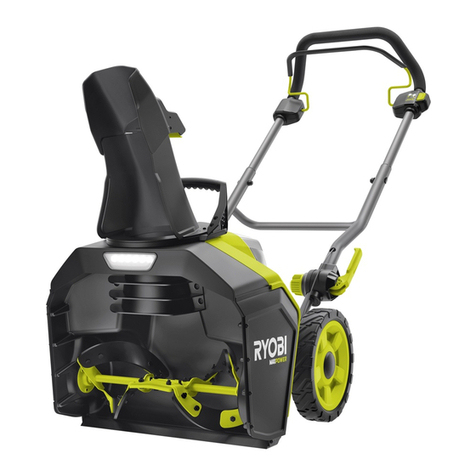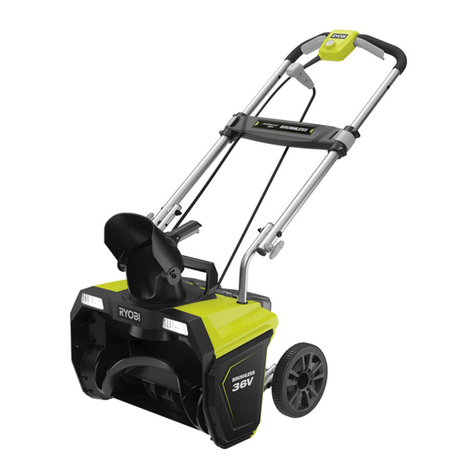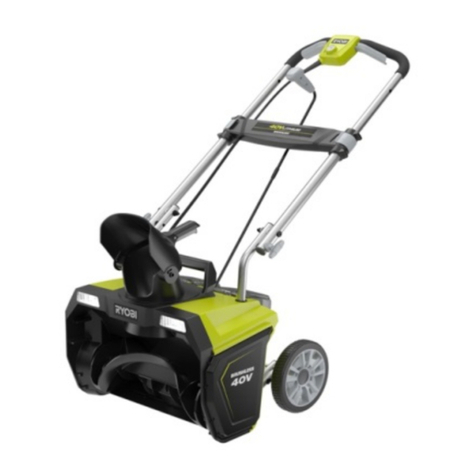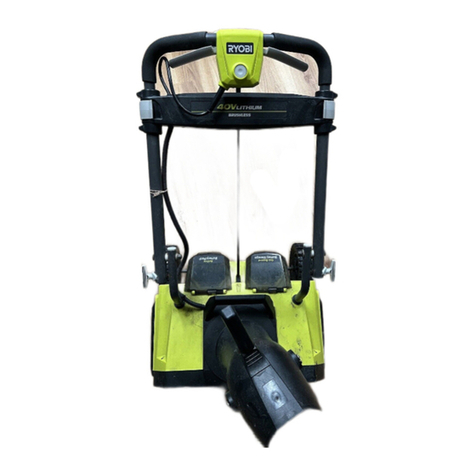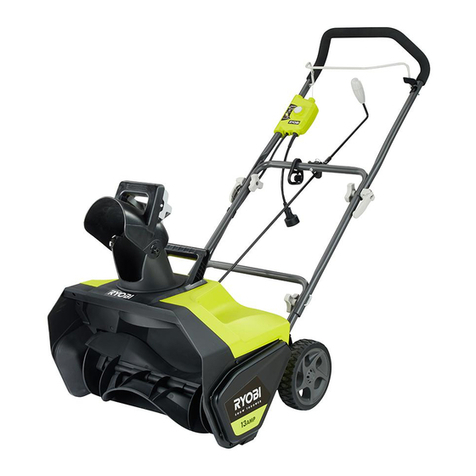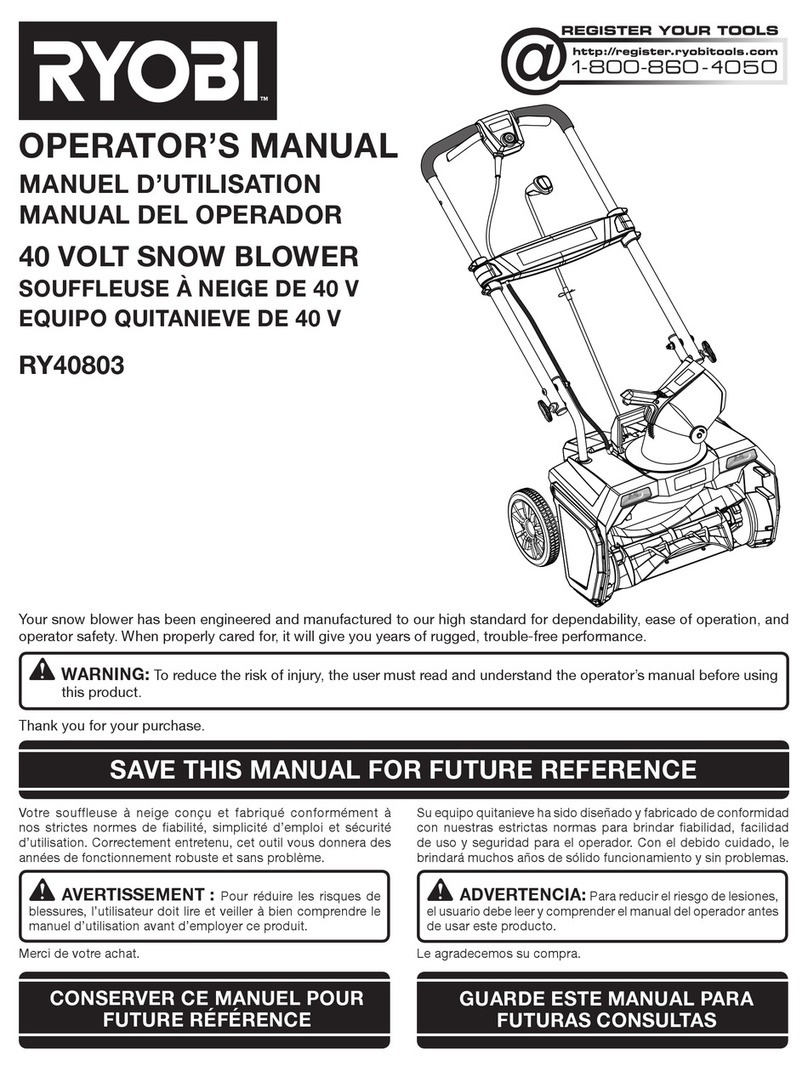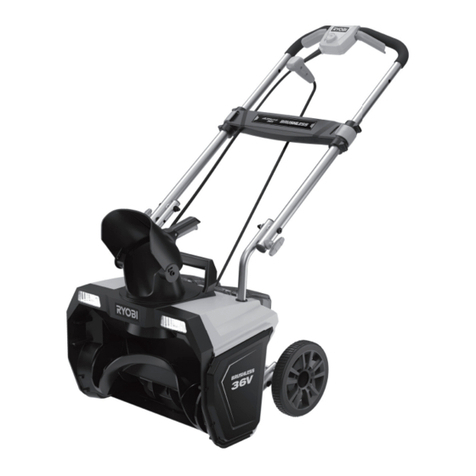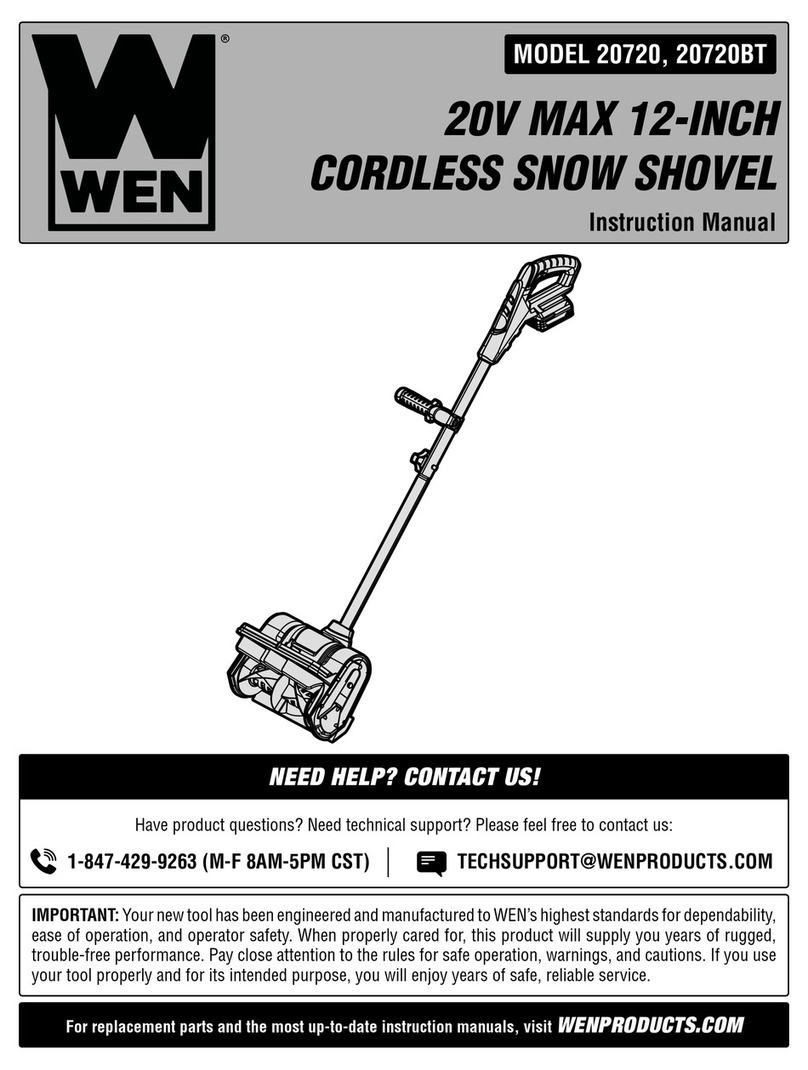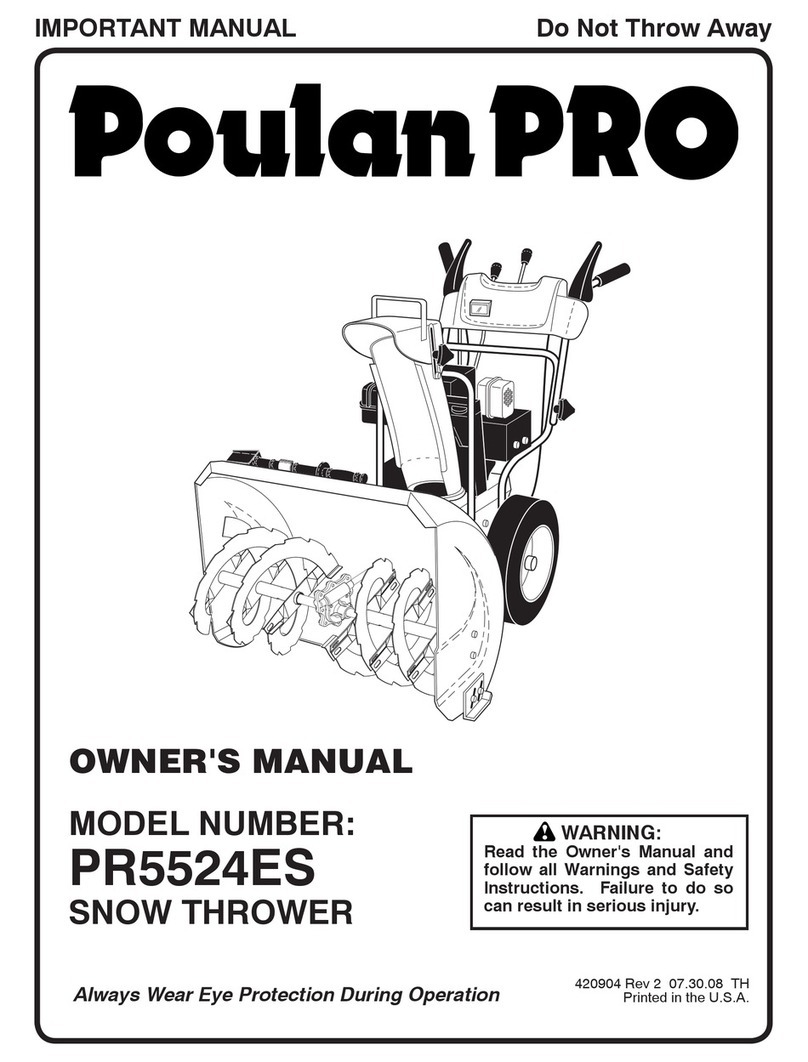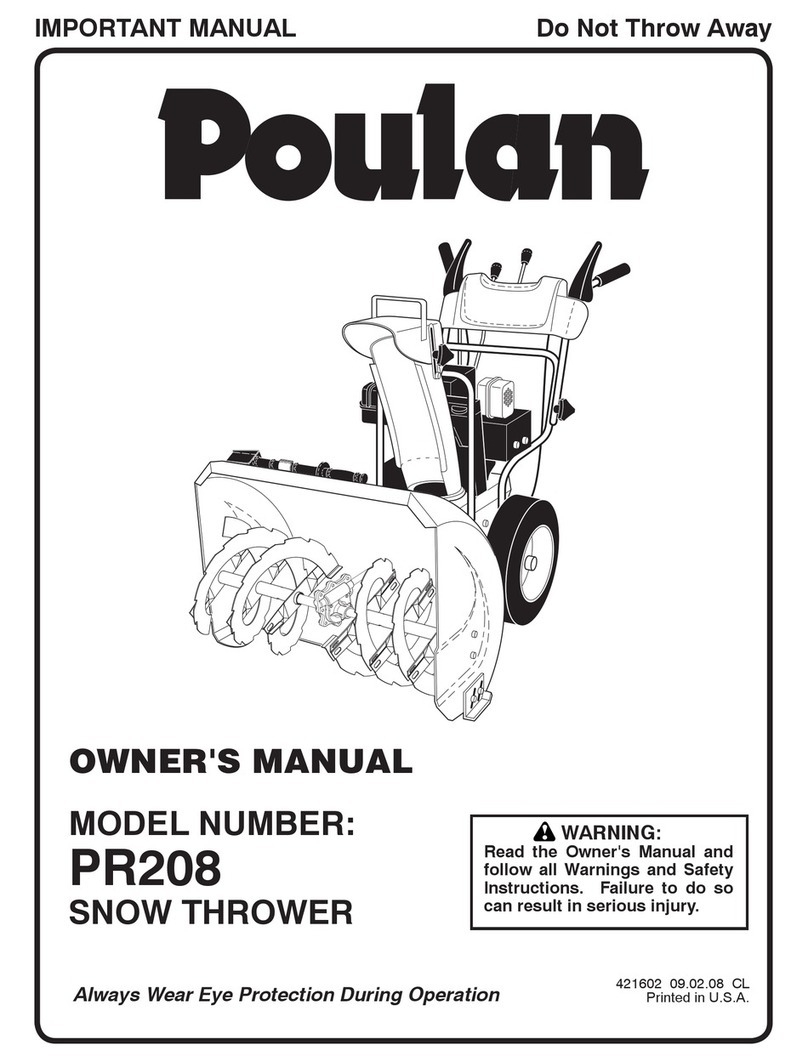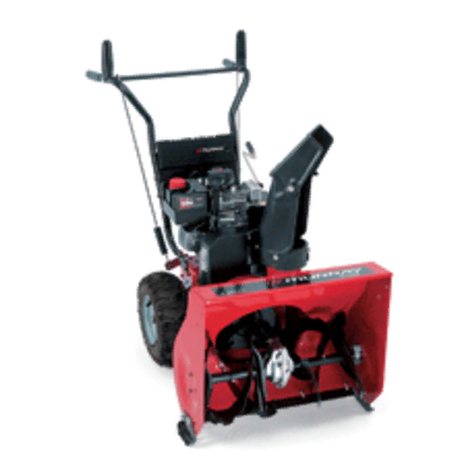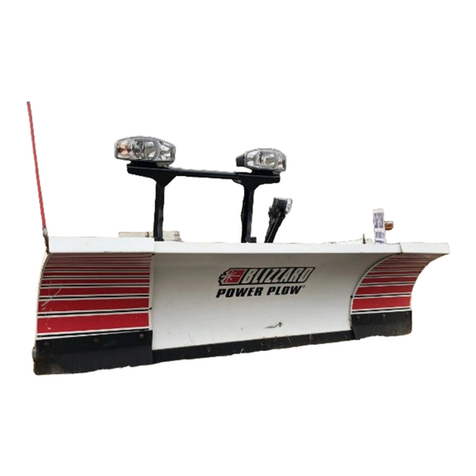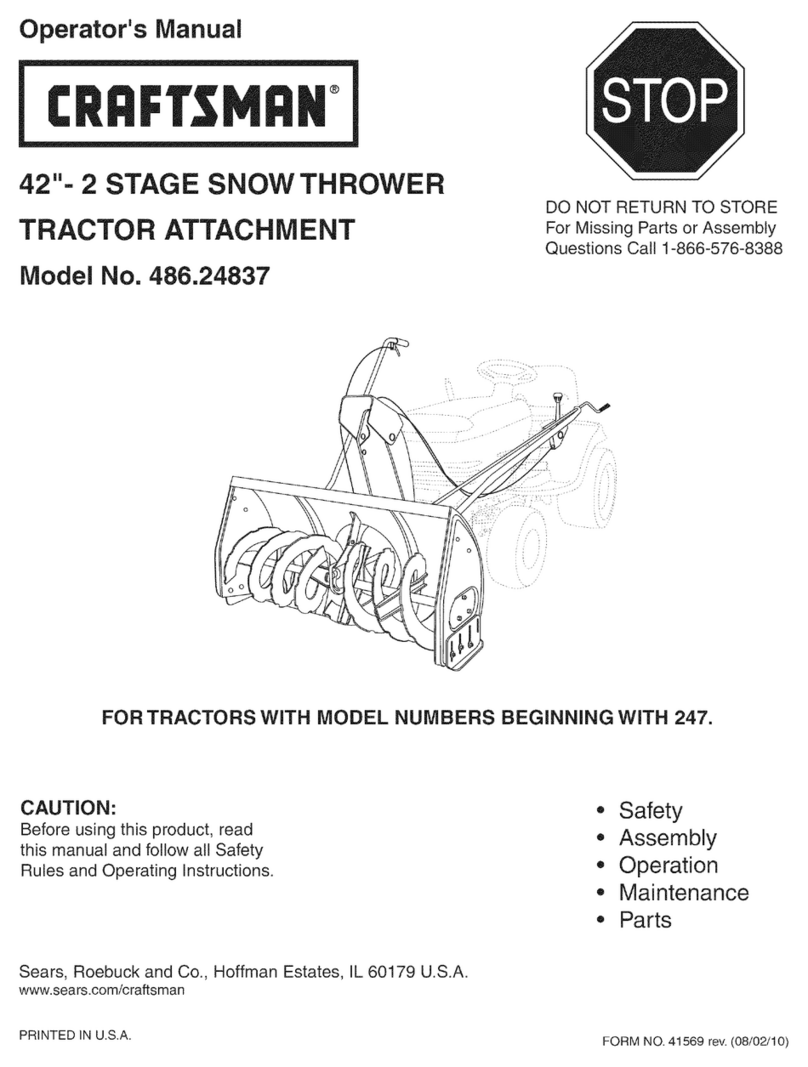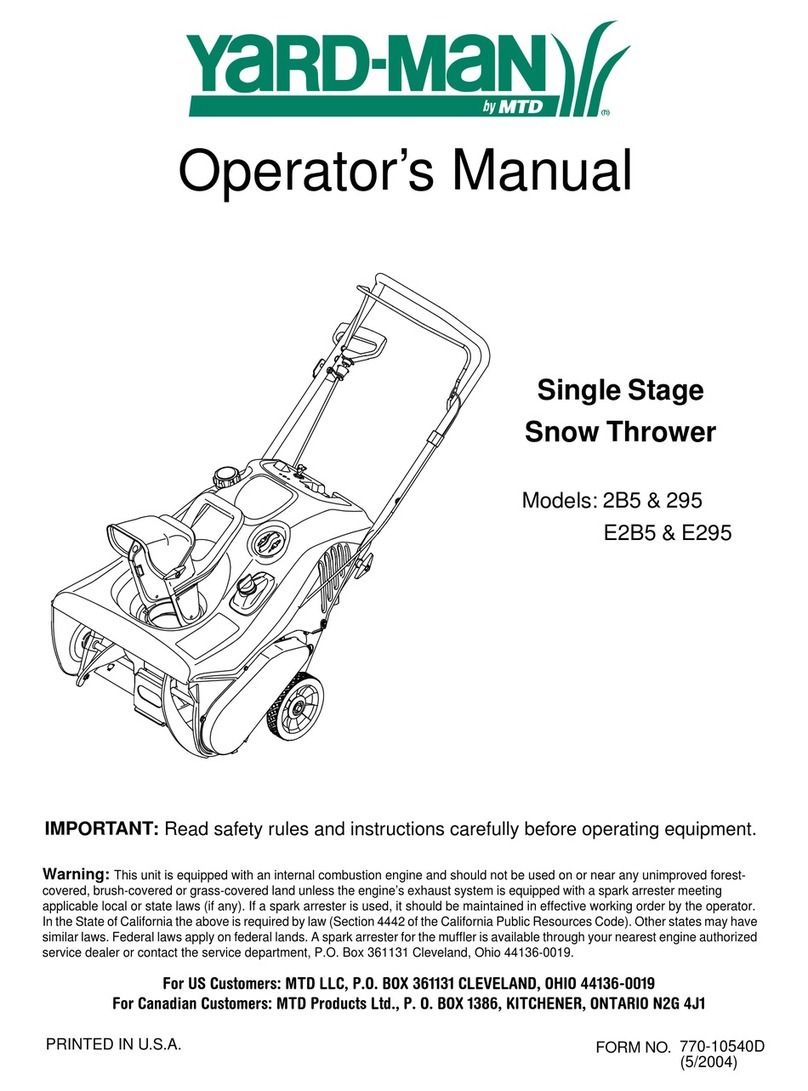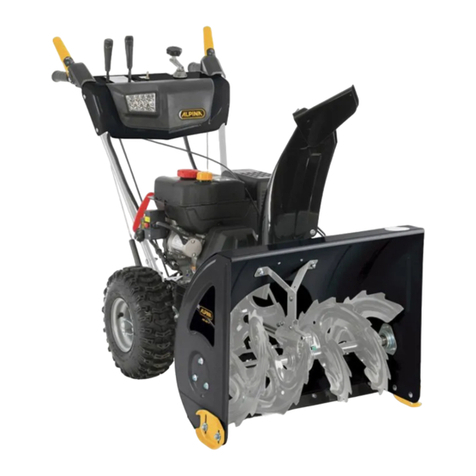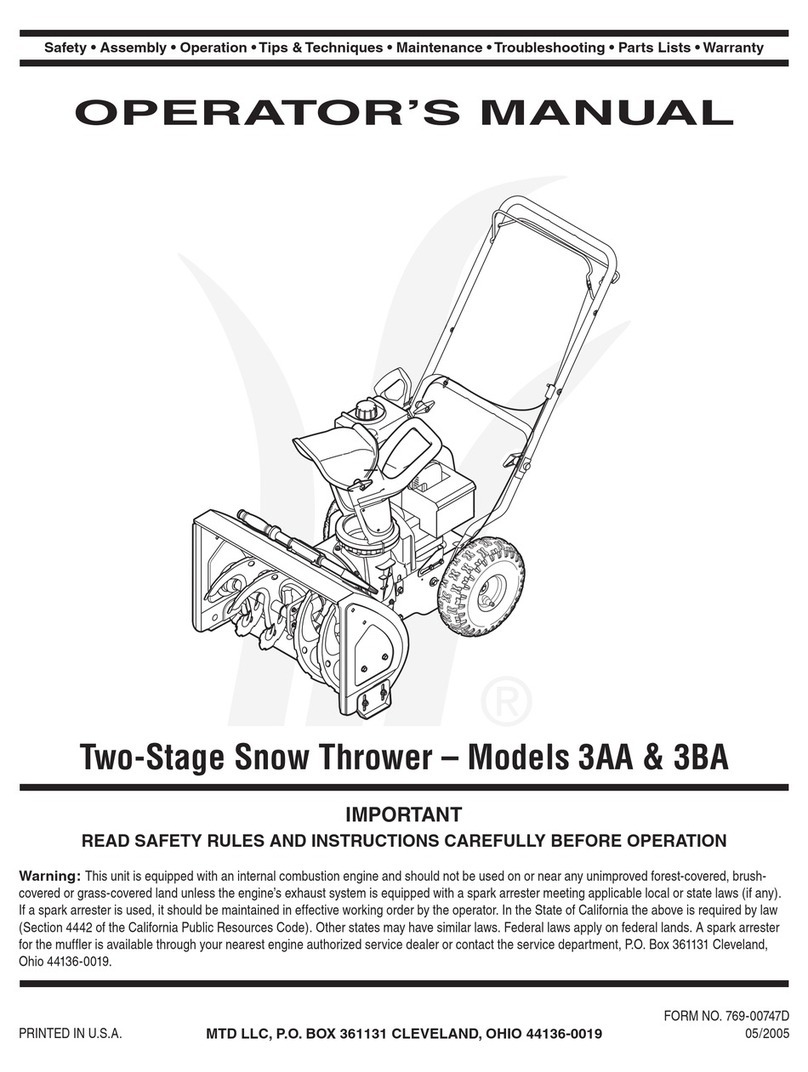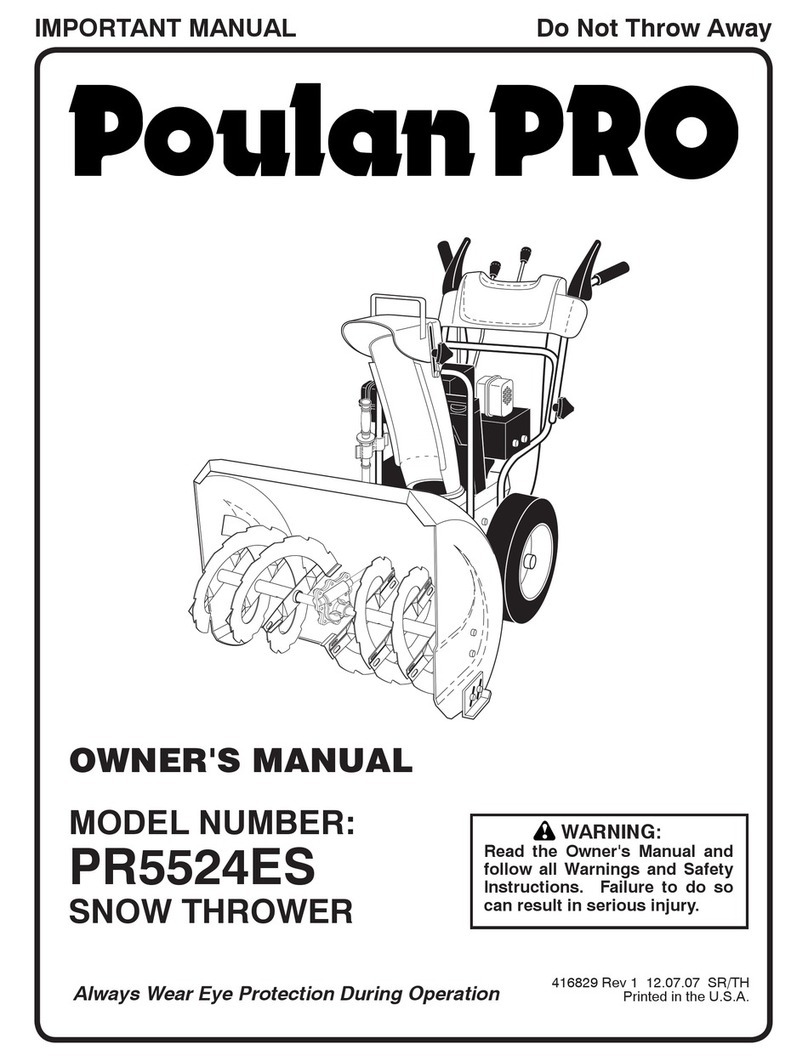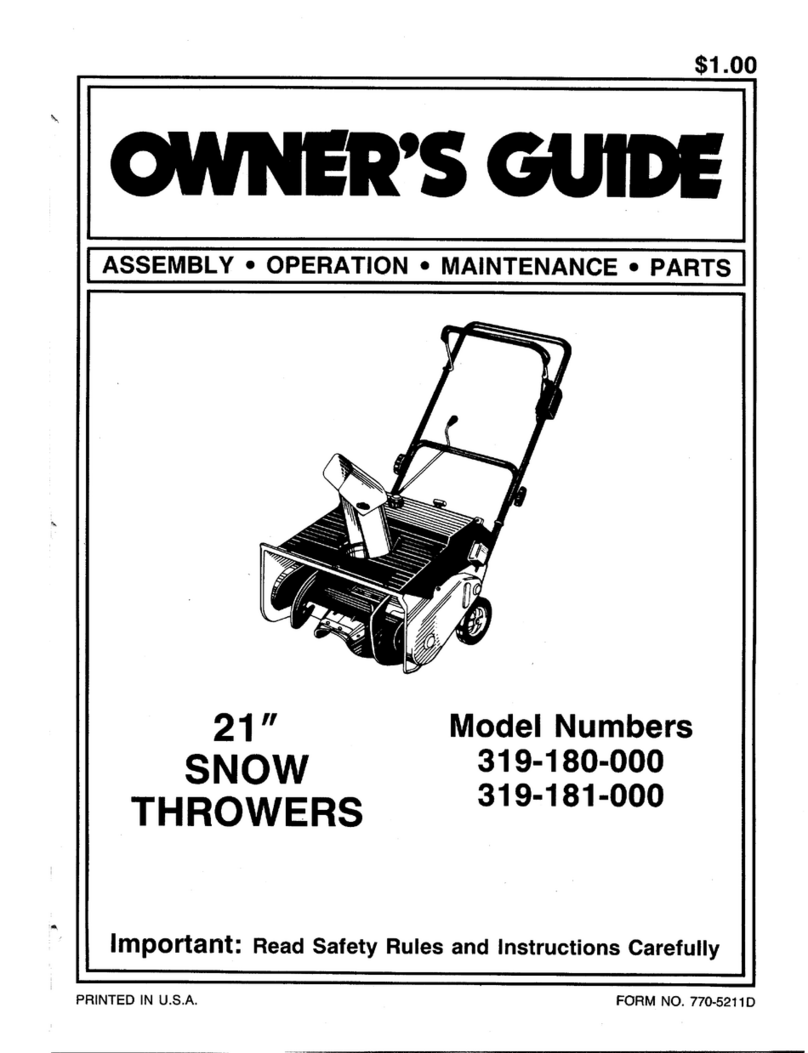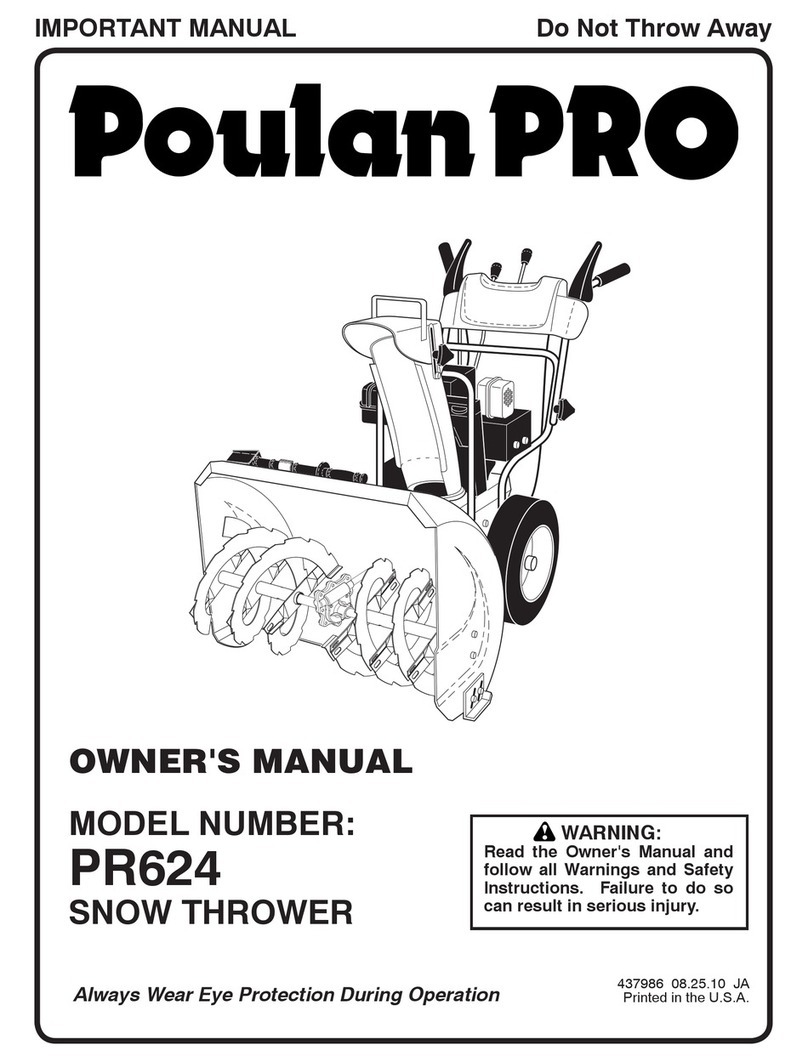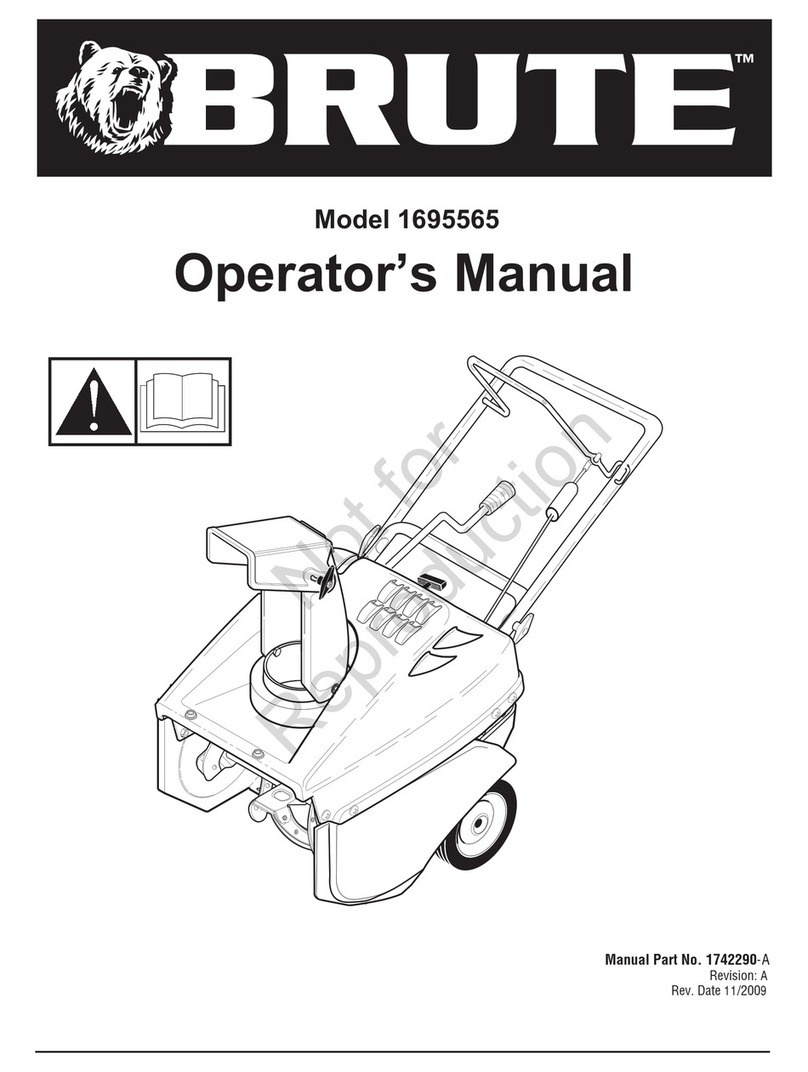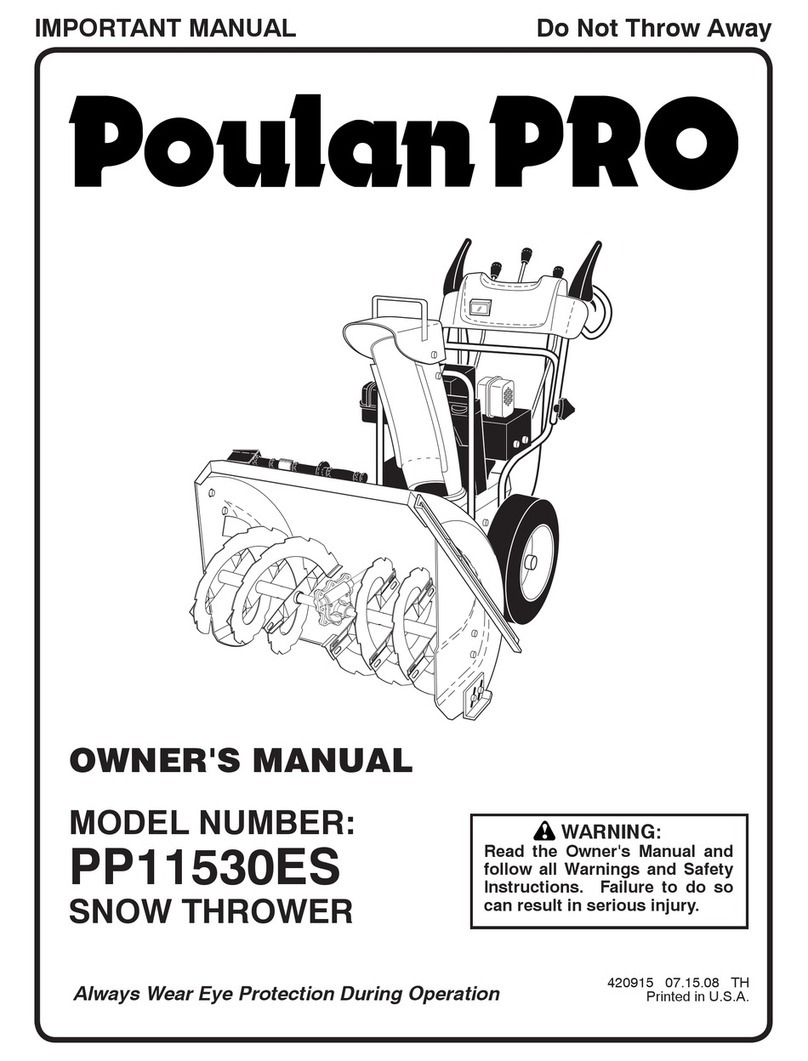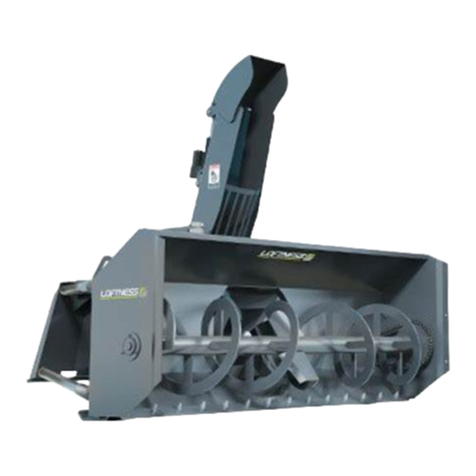
3 — English
WARNING:
READ AND UNDERSTAND ALL INSTRUCTIONS.
Failure to follow all instructions listed below and on the
machine may result in electric shock, fire, and/or serious
personal injury.
Know your snow blower. Read operator’s manual care-
fully. Learn its applications and limitations, as well as the
specific potential hazards related to this snow blower.
Following this rule will reduce the risk of electric shock,
fire, or serious injury.
Do not permit children to use snow blower. It is not a
toy.
Use only accessories that are recommended by the
manufacturer for your model described in this manual.
Accessories that may be suitable for one snow blower
may create a risk of injury when used on another snow
blower. Use only as described in this manual.
Do not put any object into openings. Do not use with any
opening blocked; keep free of dust, lint, hair, and anything
that may reduce air flow.
Keep hair, loose clothing, fingers, and all parts of body
away from openings and moving parts.
Make sure your extension cord is in good condition.
When using an extension cord, be sure to use one heavy
enough to carry the current your product will draw. A wire
gauge size (A.W.G.) of at least 14 is recommended for an
extension cord 50 feet or less in length. If in doubt, use
the next heavier gauge. The smaller the gauge number,
the heavier the cord. An undersized cord will cause a drop
in line voltage resulting in loss of power and overheating.
WARNING: Use outdoor extension cords marked SW-A,
SOW-A, STW-A, STOW-A, SJW-A, SJTW-A, or SJTOW-
A. These cords are rated for outdoor use and reduce the
risk of electric shock.
Ground Fault Circuit Interrupter (GFCI) protection should
be provided on the circuit(s) or outlet(s) to be used for the
product. Receptacles are available having built-in GFCI
protection and may be used for this measure of safety.
This snow blower should be grounded while in use to
protect the operator from electric shock. The snow blower
is equipped with an approved 3-conductor cord and
3-prong grounding-type plug to fit the proper grounding-
type receptacle. The green or green and yellow conductor
in the cord is the grounding wire. Never connect the green
or green and yellow wire to a live terminal. Your unit has
a plug that looks like the image shown in figure 2.
Use only 3-wire outdoor extension cords that have
3-prong grounding-type plugs and 3-pole receptacles
that accept the snow blower’s plug. Replace or repair
damaged cords.
This product is designed with a cord retainer that prevents
the extension cord from being pulled loose while using.
If cord is damaged in any manner while plugged in, pull
extension cord from wall receptacle.
Don’t Abuse Cord — Never carry snow blower by cord
or yank it to disconnect from receptacle. Keep cord from
heat, oil, and sharp edges.
Keep hands away from moving parts.
Avoid Unintentional Starting – Do not carry plugged in
appliance with finger on trigger. Be sure the switch trigger
is not engaged before plugging in.
Do not use tool if switch trigger does not turn it on or off.
Any tool that cannot be controlled with the switch trigger
is dangerous and must be repaired.
Do not operate snow blowers in explosive atmospheres,
such as in the presence of flammable liquids, gases, or
dust. Snow blowers create sparks which may ignite the
dust or fumes.
Keep bystanders, children, and visitors at least 100 ft.
away while operating a snow blower. Distractions can
cause you to lose control.
If appliance is not working as it should, has been dropped,
damaged, left outdoors, or dropped into water, return it
to a service center.
Stay alert, watch what you are doing and use
common sense when operating a power snow blower.
Do not use snow blower while tired, upset, or under the
influence of drugs, alcohol, or medication. A moment of
inattention while operating snow blowers may result in
serious personal injury.
Use safety equipment. Always wear eye protection. Dust
mask, non-skid safety shoes, hard hat, or hearing protec-
tion must be used for appropriate conditions.
Dress properly — Do not wear loose clothing, scarves,
or jewelry. They can be caught in moving parts.
Check for misalignment or binding of moving parts,
breakage of parts, and any other condition that may af-
fect the snow blower’s operation. If damaged, have the
snow blower serviced before using. Many accidents are
caused by poorly maintained snow blowers.
Keep the snow blower and its handle dry, clean and free
from oil and grease. Always use a clean cloth when clean-
ing. Never use brake fluids, gasoline, petroleum-based
products, or any strong solvents to clean your snow
blower. Following this rule will reduce the risk of loss of
control and deterioration of the enclosure plastic.
Always wear safety glasses with side shields. Everyday
glasses have only impact resistant lenses. They are NOT
safety glasses. Following this rule will reduce the risk of
eye injury.
IMPORTANT SAFETY INSTRUCTIONS



